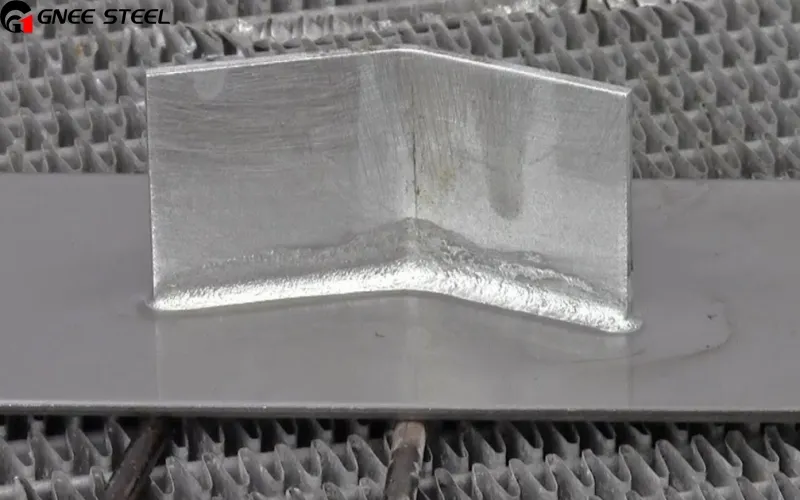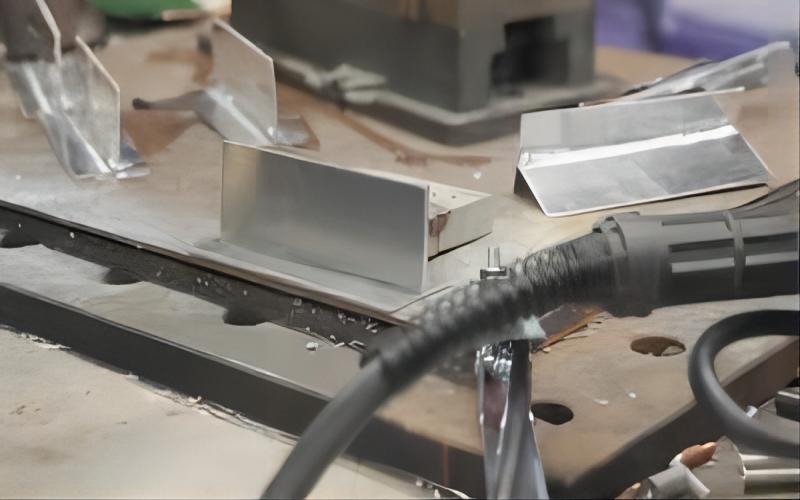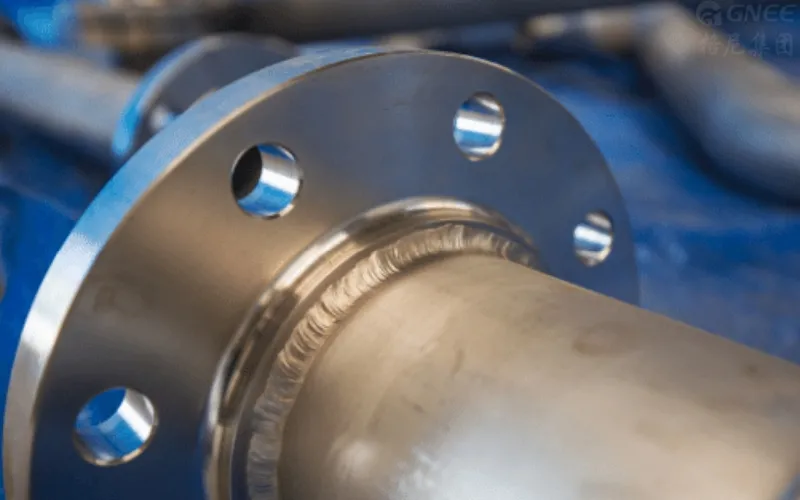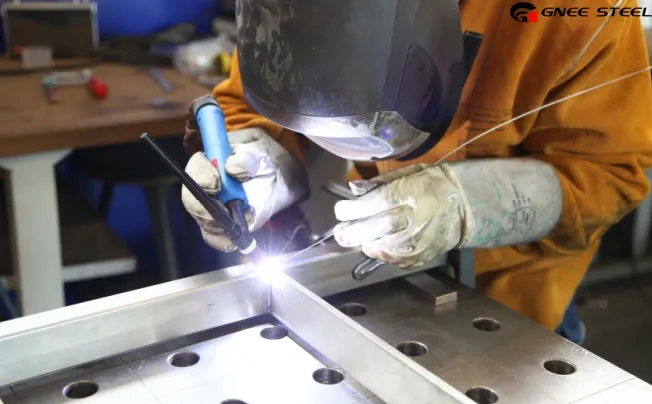Why Is Welding Stainless Steel Plate So Difficult?
Welding stainless steel plates can be pretty challenging for several reasons:
1. Stainless steel plate has a much higher thermal conductivity than other metals, which requires more heat input to weld correctly. This makes it more difficult to control the welding process and can cause distortion and warping of the material.
2. Stainless steel plate contains chromium, which can react with the carbon in the welding electrode and form chromium carbides. This process can cause the stainless steel to become brittle and susceptible to cracking, which can be challenging to detect and prevent.
3. Stainless steel plate is more prone to corrosion than other metals, so any welds must be cleaned and protected to avoid pollution or contamination.
4. The high cost of stainless steel plate means that mistakes or rework can be costly and time-consuming.
In summary, welding stainless steel plate requires high skill, rich experience, and attention to detail to ensure a successful and high-quality weld.

How To Weld Stainless Steel Plate?
1. Prepare the Material
Prepare the stainless steel plates to be welded.
2. Clean the Material
Before welding, you must make sure the material is free of dust, debris, grease, or anything else that could get in the way of getting a nice weld. You can use acetone to clean the stainless steel plate, and make sure there is no moisture remaining when you start to weld.
3. Choose the Right Work Area
Make sure the workshop is clean and ventilated. It should be kept away from carbon steel products and carbon steel processing areas since the carbon can contaminate the stainless steel plate.
4. Applying a Suitable Flux
Once the surface is pristine and free from impurities, it becomes necessary to administer a fitting flux to the stainless steel plate. Flux serves to safeguard the weld from oxidation and other atmospheric elements during the welding process. Moreover, it can facilitate superior flow and dispersion of the filler material, resulting in a sturdier and more uniform weld. The choice of flux is contingent upon the specific welding process and the type of stainless steel employed.
5. Choosing the Right Welding Method
The stainless steel plate welding process varies depending on the thickness and finish of the material, as well as the use of the finished product.
While there are a variety of methods for welding stainless steel plates, there are four that are used most commonly by welders. They are MIG welding, stick welding, flux-cored arc welding, and resistance welding. In the next section, we will focus on introducing these four welding methods.
6. Make the Weld
Keep your weld straight and steady and make sure your travel speed is right where it needs to be to get a good weld. You can use a stitching motion if desired, depending on the look you are going for.
7. Post-welded Work
After welding, several important considerations must be addressed to ensure the utmost quality and longevity of the weld. These considerations encompass removing any slag or spatter, inspecting the weld for defects, cleaning and passivating the weld surface, and storing the welded stainless steel plate properly. These steps ensure the quality and longevity of the weld and prevent corrosion or damage.

Common Methods for Welding Stainless Steel Plates
When it comes to the art of welding, the utmost importance lies in the selection of a suitable method to ensure the desired outcome. A plethora of options exist, each possessing its own merits and applications. Here, I present to you four renowned welding methods to consider:
1. MIG (Metal Inert Gas) Welding
MIG welding, or gas metal arc welding (GMAW), is a widely embraced method renowned for its swiftness and efficiency. This technique involves the feeding of a consumable wire electrode through a welding gun, which then melts and fuses the metals. The process is safeguarded by a gas, typically a blend of argon and carbon dioxide, shielding the weld from any oxidation. MIG welding is suitable for an array of materials, encompassing steel, stainless steel, and aluminum, making it a favored choice in industries such as automotive and construction.
2. Stick Welding (Shielded Metal Arc Welding)
Stick welding, also known as shielded metal arc welding (SMAW), stands as a versatile and portable method frequently employed in construction, maintenance, and repair endeavors. It entails the use of a consumable electrode coated in flux, which, upon heating, generates a protective gas shield. This shield serves to prevent any atmospheric contamination and yields welds of remarkable strength and durability. Stick welding can be applied to a variety of metals, including steel, stainless steel, cast iron, and nickel alloys, making it a reliable choice for outdoor or remote welding applications.
3. Flux-Cored Arc Welding (FCAW)
Flux-cored arc welding (FCAW) represents a semi-automatic or automatic welding method that employs a tubular wire filled with flux. The flux acts as a shielding gas and forms a slag, effectively safeguarding the weld from any atmospheric contamination. FCAW is renowned for its high deposition rates and deep penetration, making it especially well-suited for welding thick materials and executing welds in challenging positions. This method finds common applications in industries such as shipbuilding, construction, and pipeline welding.
4. Resistance Or Spot Welding
Resistance or “spot” welding, as it is often called, is one of the most economical types of welding. The resistance welding (RW) equipment is incredibly versatile, which means it can be used on both small and large projects.
RW uses an electrical current to heat frayed metal edges and seal them together. This type of welding is exceptionally productive on metal with a low melting point because it can be tailored to prevent distortion of the metal.

Frequently Asked Questions — Welding Stainless Steel Plates
Q: Can any welding process be used on stainless steel plates?
A: No, not all welding processes are suitable for welding stainless steel plates. Some operations, such as gas welding, may not provide enough heat input to effectively weld stainless steel plates, while others, such as arc welding, may generate too much heat and cause distortion or warping.
Q: What filler material should be used when welding stainless steel plates?
A: It is essential to use the correct filler material when welding stainless steel to maintain its corrosion resistance. Austenitic stainless steel filler rods are commonly used as they match the composition of the base material, ensuring a strong and durable weld.
Q: What are the best techniques for welding high-quality stainless steel plates?
A: The best techniques for welding high-quality stainless steel plates include using the correct filler material, back purging gas to prevent oxidation, controlling heat input during the welding process to avoid distortion, and employing advanced welding techniques such as pulsed TIG welding, laser welding, and plasma welding.
Q: Can I weld stainless steel plates at home?
A: In short, yes. However, it is more complicated. You need to be careful because it can get bent or cracked when it gets too hot. Even if it doesn’t crack, it can end up with scratches and marks. We recommend leaving welding stainless steel plates to the experts.
Conclusion
In conclusion, welding stainless steel plate can be challenging due to its high melting point, low thermal conductivity, and susceptibility to distortion and warping. However, with proper technique, advanced welding methods, and the correct filler material, a strong, durable, and corrosion-resistant weld can be achieved. With the right expertise and approach, welding stainless steel plates can be successful and rewarding.


